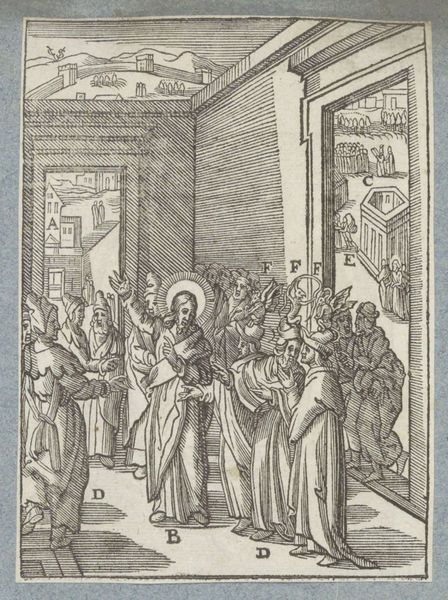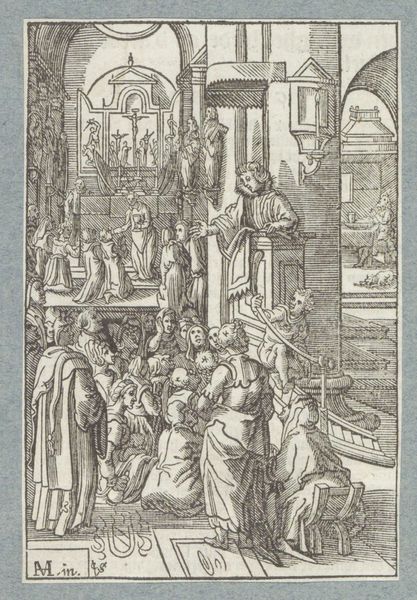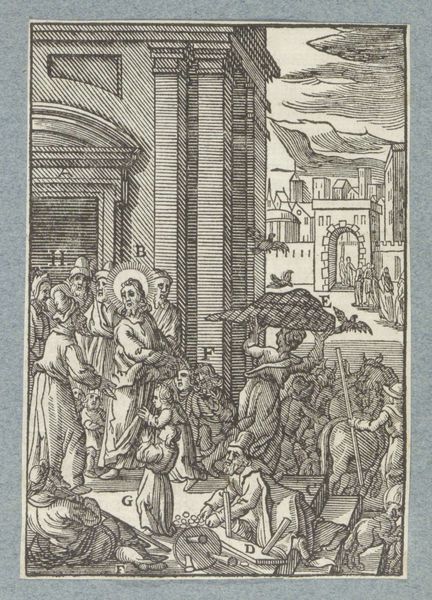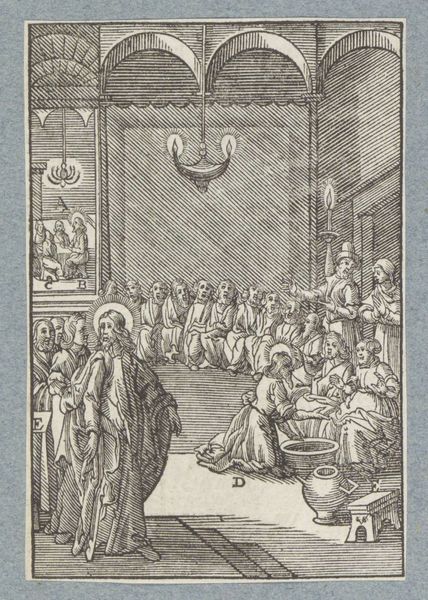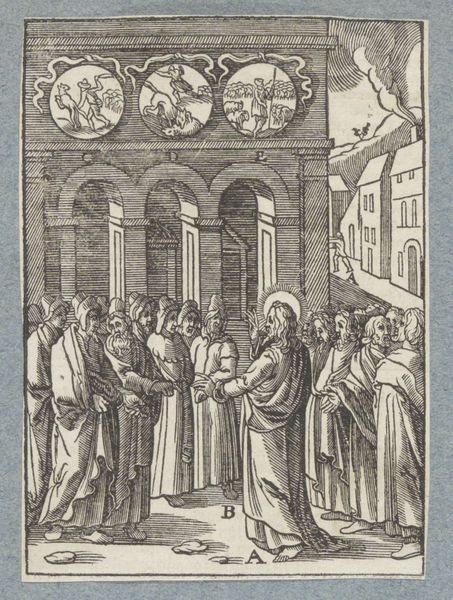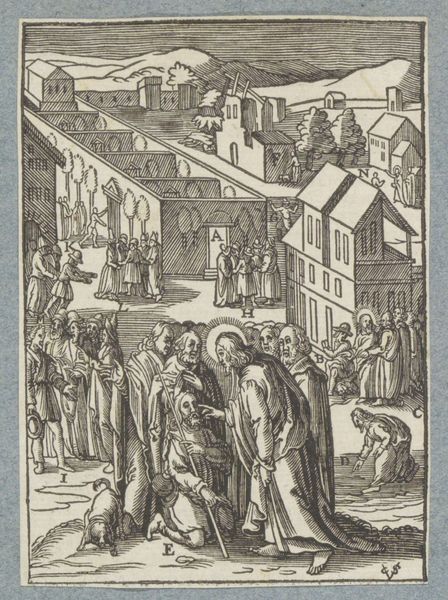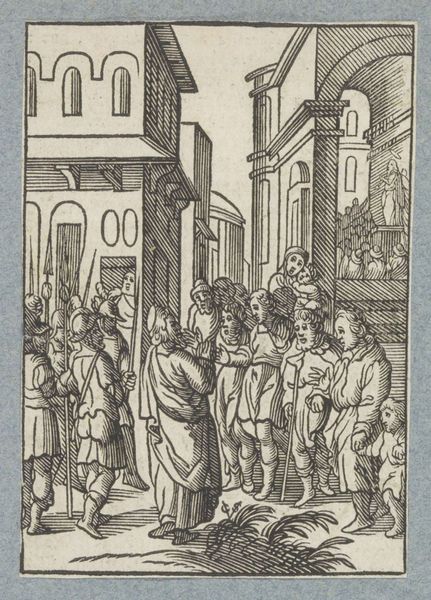
print, engraving
#
baroque
# print
#
figuration
#
history-painting
#
engraving
Dimensions: height 111 mm, width 73 mm
Copyright: Rijks Museum: Open Domain
Editor: This engraving, "Christus voor het Sanhedrin en de oudsten" by Christoffel van Sichem II, made around 1629, portrays a somber scene. The linear detail creates an intense, almost claustrophobic atmosphere. What social or cultural narratives are unfolding here, given that it's a print intended for wider circulation? Curator: Well, look closely. It's not just about the biblical narrative. Sichem, creating this during the Baroque period, is engaging in a highly charged political commentary through imagery. Consider the Sanhedrin - the religious leaders - presented as stern, powerful figures. How might contemporary viewers have interpreted that image in light of the power struggles of the time? Editor: So, it’s not simply a historical scene; it's reflecting, perhaps even critiquing, the structures of power in the artist's own society? Curator: Precisely! Engravings like these were accessible and could disseminate ideas widely. Ask yourself, who was commissioning this work and what message were they hoping to send by illustrating this particular moment in the Gospels? How does the setting - a staged architectural space- contribute to that messaging? Editor: The figures seem trapped almost, framed not just by the picture but also by the architecture. Was the goal to remind viewers of the potential abuse of authority during a period when religious tensions were reshaping the socio-political landscape? Curator: Good question! Also, look at how Christ is positioned, a small halo behind him, but far outnumbered. How might Sichem and the print's patrons used his representation to generate feelings about injustice or tyranny at the time, either ecclesiastical or civil? Editor: It makes you wonder who might have seen this print and where it would have been displayed. This small engraving really becomes a lens through which to view an entire era. Curator: Yes, understanding the context is critical. The print is not just a historical record, but an active participant in shaping historical consciousness. I've noticed new meaning just now.
Comments
No comments
Be the first to comment and join the conversation on the ultimate creative platform.


